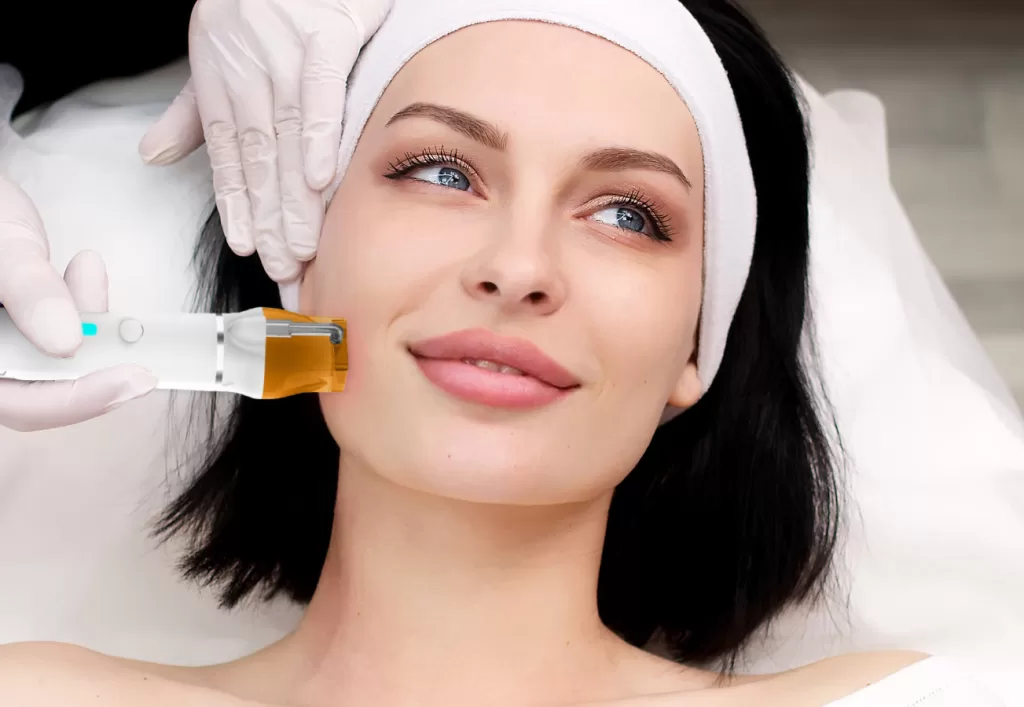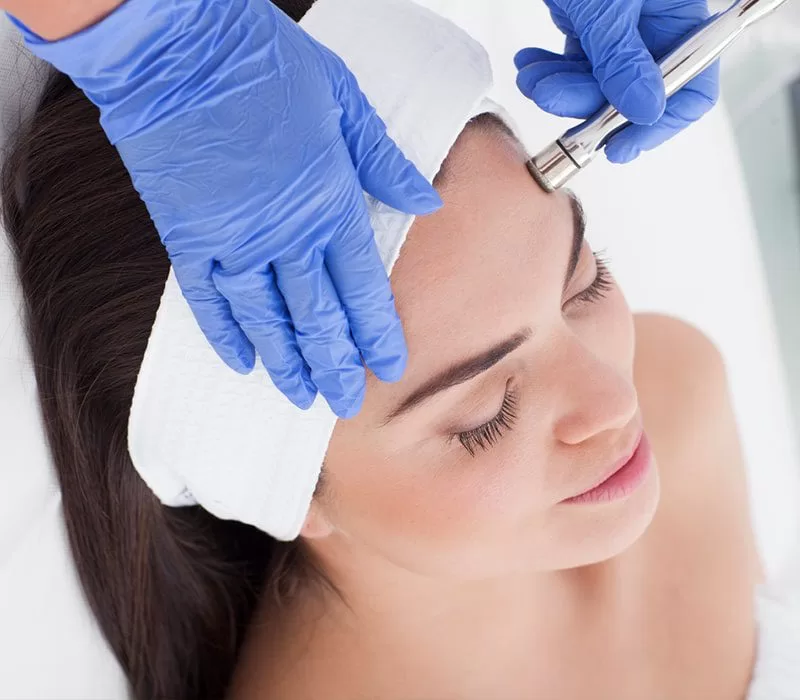Introduction
When we have skin problems such as wrinkles, pigmentation, or even acne, we start looking for non-invasive solutions. Though microneedling and microdermabrasion have similar names in addressing similar skin concerns, their techniques in performing treatments are completely different. These two powerful yet distinct techniques of microneedling vs microdermabrasion have garnered significant attention in both dermatology clinics and aesthetic practices. Each offers impressive benefits, but choosing the right one can be overwhelming if you're not familiar with their core differences.
In this blog, we’ll break down the difference between microneedling and microdermabrasion, explore how they work, who they’re best suited for, and how to choose the right cosmetic treatment for healthy skin. Whether you're a skincare enthusiast or a clinic owner looking to upgrade your treatment menu, this blog will help you understand microneedling vs microdermabrasion thoroughly.
What Is Microneedling? A Closer Look at the Collagen-Stimulating Treatment

Microneedling, often referred to as collagen induction therapy, is a minimally invasive procedure that harnesses the skin’s natural healing powers. Using a device equipped with tiny needles, this treatment creates controlled micro-injuries in the dermal layers of the skin. While this may sound intense, these microchannels stimulate the body’s healing response, ramping up the production of collagen and elastin, two structural proteins essential for firm, youthful skin.
What Does Microneedling Treat?
- Acne scars and pitted scars
- Fine lines and wrinkles
- Stretch marks
- Hyperpigmentation
- Enlarged pores
- Uneven texture
Downtime and Results Timeline
Post-treatment, your skin may feel sunburned or tight for 24–72 hours. Minor redness and sensitivity are common side effects, but most people return to normal activities within a few days. Visible improvements appear after 1–2 weeks, with full collagen remodeling unfolding over 4–6 weeks.
Key Benefits of Microneedling
Compared to microdermabrasion, microneedling offers more comprehensive benefits. It is suitable for all skin types and tones and can be safely applied to various body areas, including the face, hands, and décolleté. Microneedling stimulates deep collagen and elastin production, helping to reduce fine lines and wrinkles, improve skin texture and tone, and leave the skin firmer, smoother, and more youthful. It also enhances the absorption and efficacy of skincare products. Additionally, microneedling is highly effective in treating acne scars, stretch marks, and reducing pigmentation issues such as age spots and sun damage. For optimal and longer-lasting results, patients are encouraged to undergo a series of treatment sessions.
Microneedling is often performed using either traditional mechanical pens or advanced RF microneedling machines that combine needling with radiofrequency energy like RFMStar™ from PZLASER to boost results and tighten deeper layers with customizable needle depths.
What Is Microdermabrasion? A Gentle Exfoliation Explained

Microdermabrasion is a gentle, non-invasive skin resurfacing treatment that exfoliates the top layer of skin using a handheld device. The treatment involves either crystal-based spray exfoliation or a diamond tip combined with vacuum suction to remove dead skin cells, unclog pores, and reveal a smoother complexion.
What Does Microdermabrasion Treat?
- Dull or uneven skin tone
- Clogged pores
- Mild acne and blackheads
- Sun damage
- Superficial fine lines
- Light pigmentation
Downtime and Results Timeline
Microdermabrasion offers immediate results with virtually no downtime. After the session, the skin may feel slightly tight, similar to a light sunburn, and appear slightly flushed. Most people return to their day right after treatment.
Key Benefits of Microdermabrasion
Microdermabrasion is an excellent introduction to aesthetic skincare and beauty. By exfoliating dead skin cells and promoting cell renewal, it effectively removes the outer layer of skin. It is suitable for addressing a variety of skin concerns—even for sensitive skin—including improving skin texture and tone, softening fine lines, minimizing pores, and reducing pigmentation. This quick, painless procedure is ideal for busy urban professionals seeking an instant glow.
Although it doesn’t stimulate collagen in the way microneedling does, it’s an ideal choice for clients seeking a refreshed, polished look without recovery time. High-performance professional microdermabrasion machines deliver better outcomes with adjustable suction power and abrasion tips, making them a staple in medspas and dermatology clinics.
Microneedling vs Microdermabrasion: Key Differences You Should Know
Let’s get down to the details: how do microneedling vs microdermabrasion treatments really compare?
| Feature | Microneedling | Microdermabrasion |
|---|---|---|
| Technique | Penetrates skin with tiny needles | Exfoliates surface with diamond tip/crystals |
| Depth of Treatment | Deeper dermal layers | Only affects the outer epidermis |
| Collagen Production | Stimulates collagen and elastin | Does not trigger collagen synthesis |
| Ideal For | Scars, stretch marks, wrinkles, and texture | Dullness, clogged pores, mild pigment issues |
| Pain Level | Slight discomfort | Painless |
| Downtime | 1–3 days | Minimal to none |
| Treatment Cost | Moderate to high (varies by provider) | Generally lower per session |
| Device Type | Microneedling machine, RF devices | Microdermabrasion machine, crystal/diamond tip |
Technique & Mechanism
Microneedling works from the inside out, creating tiny holes in the skin to activate healing. In contrast, microdermabrasion works from the outside in, buffing away dead skin cells on the surface.
Cost Consideration
Microneedling cost ranges from $200–$700 per session, depending on the depth of treatment and whether RF microneedling is used. Microdermabrasion is more budget-friendly, usually costing between $75–$150 per treatment.
Side Effects & Recovery
While microneedling may cause pinpoint bleeding and inflammation, side effects are usually mild and short-lived. Numbing cream is often applied pre-treatment to minimize discomfort. Microdermabrasion, being superficial, rarely causes more than temporary redness or tightness.
Aftercare Requirements
Microneedling aftercare includes avoiding sunlight, makeup, and active skincare ingredients for a few days. Skin barrier support is critical. Microdermabrasion requires simple moisturizing and SPF use post-treatment.
How to Choose the Right Treatment for Your Skin Goals
Microneedling and microdermabrasion therapy treat similar cosmetic issues by effectively targeting pigmentation, acne scars, and fine lines and wrinkles. But they also vary in treatment depth, effectiveness, and recovery time. Selecting between microdermabrasion vs microneedling depends on your skin condition, goals, and tolerance for downtime.
It’s important to note that microneedling is slightly more intensive and can cause greater discomfort, but it delivers longer-lasting results, making it more suitable for individuals with serious skin concerns such as acne or oily skin. In contrast, microdermabrasion is a gentler treatment aimed at refreshing and revitalizing the skin. Both procedures are FDA-approved and widely recognized by experienced medical professionals as safe and low-risk options.
Choose microneedling if you're dealing with acne scars, deep wrinkles, or stretch marks, or if you're concerned about collagen loss and skin laxity. It's ideal for those seeking long-term improvements in skin texture and firmness, and who are comfortable with a few days of downtime. On the other hand, opt for microdermabrasion if you have dull, congested, or sensitive skin, want a quick refresh before an event, are new to aesthetic treatments, or prefer minimal recovery time.
FAQ Section
Can I do both microneedling and microdermabrasion?
Yes, but not simultaneously. Many clinics alternate treatments every few weeks to address multiple concerns synergistically.
Is microneedling safe for dark skin?
Yes. Unlike lasers, microneedling has a low risk of post-inflammatory hyperpigmentation, making it suitable for Fitzpatrick skin types IV–VI.
Is microdermabrasion good for acne-prone skin?
Yes, especially for non-inflammatory acne and clogged pores. However, avoid during active breakouts to prevent irritation.
Is Microneedling More Effective Than Microdermabrasion?
For deeper concerns like scars, lines, and skin laxity, microneedling provides superior results due to its impact on deeper skin layers.
How Often Should I Get Microneedling or Microdermabrasion?
It's recommended to do microneedling every 4–6 weeks for 3–6 sessions, followed by maintenance, and microdermabrasion every 2–4 weeks, depending on your skin’s tolerance and goals.
Choose PZLASER's Microneedling and Microdermabrasion Machines for Your Skin Needs
For professionals looking to deliver exceptional skincare results, PZLASER Company offers state-of-the-art technology with unmatched reliability. It stands out with CE and FDA-certified manufacturing, offering customization services and private labeling to meet the unique needs of your clinic or spa. Backed by an experienced technical R&D team and reliable global support, we ensure fast delivery and responsive after-sales service.
Our professional microneedling and microdermabrasion machines are designed to meet your skin needs. The RFMStar™ microneedling machine combines RF microneedling and vacuum suction technology for clinical precision and versatility. It features adjustable needle depths for customized treatments that penetrate deep into the dermis to stimulate collagen production, and multiple cartridge options tailored for the face, eyes, and body. With minimal downtime and visible, lasting results, it's highly favored by clinics for its user-friendly design, high patient satisfaction, and proven effectiveness in treating both fine lines and acne scars.
Our professional microdermabrasion machine offers gentle yet effective exfoliation, combining diamond-tip technology for precise skin resurfacing with vacuum suction to cleanse pores and promote lymphatic drainage. With adjustable settings suitable for all skin types, it’s the ideal choice for medspas and dermatology centers looking to provide a safe, high-reward treatment that delivers visible results for clients of all ages.
Conclusion
In a word, both microneedling and microdermabrasion offer impressive benefits in skincare. The key lies in understanding your skin’s needs and selecting the right modality, whether you seek deep collagen repair or surface-level rejuvenation.
For long-term transformation, microneedling takes the lead with its ability to stimulate collagen from within. For quick glow-ups with no downtime, microdermabrasion is a worthy go-to. PZLASER is a leader in professional-grade microneedling machines and microdermabrasion systems to help you deliver stunning results safely and efficiently.






